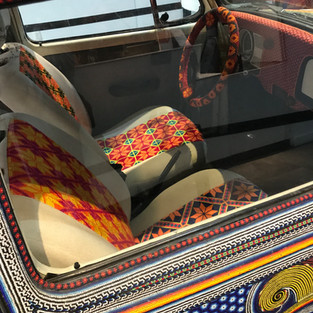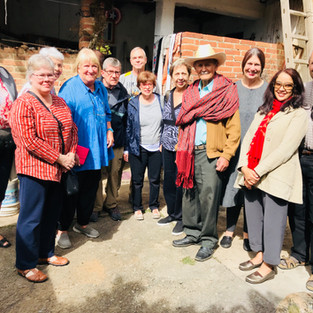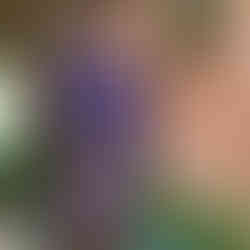Mexico through Seven Traditional Folk Arts
- Shila Desai
- Nov 28, 2020
- 6 min read
Updated: Mar 25, 2021

Mexico’s myriad folk arts are a magnet for culturally curious visitors because they open a window on deeply held traditions. From handwoven textiles to pottery, beading, and mask making, Mexico’s artesanías are just as functional as decorative. Typically they are crafted by artisans with no formal training, often from an indigenous group.
Led by the incomparable Chloë Sayer, fifteen days of our Mexico Folk Art tour unspooled in a succession of delights. Through visits with award-winning artisans, we enjoyed an intimate look at a multitude of folk arts. Here are seven of my favourites.
Beading

A fitting place to start is Mexico City’s marvellous Museo de Arte Populaire (Folk Arts Museum), where the centrepiece, 'El Vochol', is a VW Beetle decorated in millions of beads connecting Mexico's past and future. El Vochol is a joint testament to the intricate beaded handicrafts of the Huichol people and the Beetle, known as “Vocho”, which served as common taxis during the 20th century. The union of “Vocho” and “Huichol” gave the piece its name, “El Vochol.” Two Huichol artisan families comprising eight artisans applied 2,277,000 beads to the car over the course of over 4,000 hours.
The finished car is covered in historical and mythological symbols. In the back, a shaman paddles a canoe, while on other parts of the car, we noted the Sun god, the deer god, the corn god, and the fire grandfather as well as scorpions, peyote flowers, birds, and lizards. The car has been exhibited in New York, Washington, Paris, and London. However, its permanent home is in the lobby of the Museo de Arte Populaire.
Alabrijes

Drawing on the pure joy of creation, alabrijes are phantasmagorical papier-mâché creatures combining features of different animals. The tradition began relatively recently after Mexican artist Pedro Linares woke up from a dream of magically metamorphosed animals: donkeys with wings, birds with horns, a lion with an eagle’s head. Linares brought the art form to Oaxaca, where local artisans have since popularized it. Each person, it is believed, is represented by a different alabrije depending on his or her personality. So, if you are tenacious and imaginative, expect crab claws on a soaring eagle, or conversely, eagle feathers on a scuttling crab.
We visited the home/workshop of Pedro’s son, Felipe Linares, and grandsons, Leonardo and Felipe Jr. The Linares family’s work is in museums worldwide; importantly, Pedro Linares’ dream has caught the imagination of the nation. During Days of the Dead when we arrived, Mexico City’s main street was abuzz with huge alabrijes for a country-wide competition.
Rebozos

The rebozo is basically a rectangular ikat shawl, and an iconic emblem of Mexico. Traditionally, it is often gifted by a man to his bride as a symbol of their marriage. Thereafter, it is used as a protection from the sun, for evening warmth, to carry babies and transport food from the market. The colour and pattern can offer clues to socio-economic background. The most coveted are the ikat robozos from Tenancingo de Degollado, and in particular, the ones created by master weaver, Don Evaristo Borboa Casas. In his home workshop, a sprightly nonagenarian Evaristo stands upright to weave on a hybrid backstrap, the otate, that he constructed himself. His eleven daily hours on the loom have whittled to two. In order to yield wider widths, ikat looms are heavier than backstrap and men mostly do the weaving. Evaristo ties and dyes all his yarn, and with his perfect registration, can work as many colours into the cloth if he wishes. Each weaver in Tenancingo has his own variation and particular pattern. People around town can tell who made the cloth. In their spare time, household women hand tie the fringes, each of which can take up to seven months. During the 1910 Mexican Revolution the rebozo was worn like an X-shaped halter, criss-crossed over the front by women fighters who used it to carry bullets and babies, and as a shroud for the dead.
I’d have loved to afford Don Evaristo’s magnificent red rebozo. Instead, I settled for next best, Jesus Zarate’s minimalist palette rebozo.
Papercutting

Papel picado, the art of paper cutting, has been around nearly as long as paper. Papel picado symbolize the wind, one of the elements of life. The Aztecs, who originally cut patterns on bark, began using tissue paper with the arrival of hacienda stores. Tissue paper is layered 40-50 thick and cut precisely with small chisels or scissors to depict motifs surrounding festivals and celebrations. In Mexico, papel picado decorate ofrendas, homes, streets and buildings. Papel picados are also used to assist in one's life journey. If one wants to improve a relationship, better their crops, or receive assistance with a life-matter, they consult a shaman who cuts a figure into a papel picado to the person's specific need. It is placed in a home altar and revered.
Alejandro (Sergio) Hernández, a renowned artist in paper, has travelled the world as artist-in-residence to install, amongst others, magnificent Days of the Dead altars. We caught up with him in his studio for a demo of an intricate art.
Talavera Pottery

The process is complex and time-consuming. At a Talavera workshop, we watched the mixing and filtering of clays, laying out to achieve required consistency (can take a month), trampled by foot, kneaded by hand, and sorted for different purposes. That’s all before it makes it to the maestro who throws it. Raw pottery dries for up to 3 weeks to minimise risk of fissure. The first firing is at a slowly raised 1000 C for 9 hours and cooled to 200 C for a further 20 hours. It’s left for 1-2 days before glazing and painting with metallic oxides, cobalt oxide, copper oxide for green, tin for white (therefore tin glazed), iron oxide, and iron oxide with hematite for red. A second firing ensures minerals harden and vitrify. To ensure the lead will never leach, the Mexican govt mandates lead content and extremely high firing temperatures.
Heads reeling with new appreciation for the process, we headed to the workshop’s little store for a few treasured purchases.
Tree of Life

In Metepec, we met up with the celebrated Soteno family for glorious Tree of Life ceramics. The Sotenos have shown their work in many countries. After a delicious lunch prepared by Amalia Soteno, Tiburcio Soteno led us through a workshop of clay-modelling.
The creation of Trees of Life has existed in Mexico’s central highlands since 1800 BCE. A common theme was the duality of life and death and the relationship of man with the natural world. After the Spanish conquest, friars destroyed ceramics depicting old gods and replaced them with images of Christian iconography. Trees of Life provided evangelical tools to introduce Biblical stories – particularly Adam and Eve in the Garden of Eden – to the native population. They are used as incense burners in churches and home altars, and larger ones form centrepieces at major religious parades. Some of Tiburcio’s custom-ordered Trees of Life are completely unrelated to the Garden of Eden. Instead, they represent the history of a famous person or place. I fell in love with a creation by Tiburcio’s son, Israel. The tree of life atop a rearing bull made it safely back to Toronto and now graces my dresser.
While the Sotenos shine in Metepec, Angelica Delfina Vasquez Cruz is the undisputed queen in Oaxaca. Fresh off a visit to Monte Alban, we visited Angelica’s light-filled studio to learn how, using her father’s tools she began clay modelling at age seven. Unlike other women artisans, she never stopped when she married. Her father-in-law would sell her pieces as his own and accept awards her work garnered.
Oaxaca rugs

No visit to Oaxaca is complete without exploring Zapotec’s rich handloomed rug weaving traditions. Cochineal, the bright red dye from tiny snails on the tejute cactus, was treasured during pre-Hispanic Mesoamerica. The Zapotecs had intimate knowledge of working with this fugitive dye – a skill that Isaac Vasquez demonstrates to this day. The dye is relatively simple to prepare. Brittle dried snails are ground and boiled in a water solution with lime juice and “certain dried leaves”. The challenge is getting the wool to accept the dye. In Isaac’s studio, the light is suffused with a profusion of reds: crimson, scarlet, maroon, mauve, coral, pink, and lavender. Besides cochineal, Isaac uses indigo and the other natural dyes for his famous treadle-loomed, tapestry-patterned rugs. Motifs are based on traditional Zapotec design elements from pre-Hispanic buildings, ruins, and other ancient sites. Isaac and his family have been meticulous, creative, and collaborative in both preserving and sharing traditional Zapotec textile practices.
A set of cochineal dyed rugs spoke to me. They’d be perfect on a wall in my new home. I couldn’t – and glad I didn’t – walk away.
We have many repeat requests for another Mexico tour with Chloë. Would you like to be kept informed? Write us and let us know.

Thanks for taking a look! I am Shila Desai, owner of E.Y.H.O. Tours. I personally handcraft itineraries, infusing them with curated activities, accommodations, and sightseeing. Together with my in-country teams, we deliver exceptional holidays every time. E.Y.H.O. specialises in Indian sub-continent, Africa, Turkey, and Mexico among other locations. I invite you to leave me a comment or write shila@eyhotours.com














































